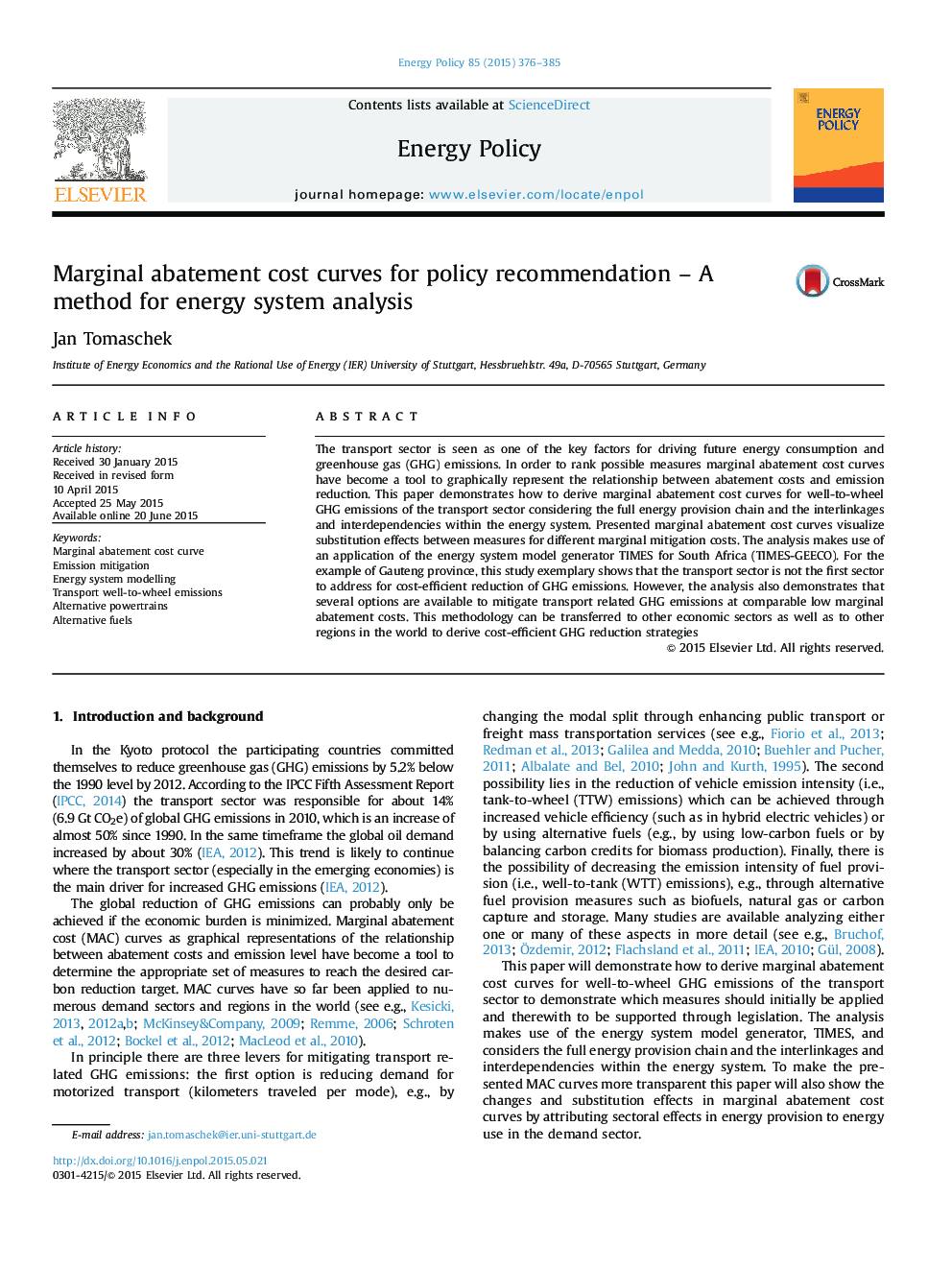| Article ID | Journal | Published Year | Pages | File Type |
|---|---|---|---|---|
| 7400804 | Energy Policy | 2015 | 10 Pages |
Abstract
The transport sector is seen as one of the key factors for driving future energy consumption and greenhouse gas (GHG) emissions. In order to rank possible measures marginal abatement cost curves have become a tool to graphically represent the relationship between abatement costs and emission reduction. This paper demonstrates how to derive marginal abatement cost curves for well-to-wheel GHG emissions of the transport sector considering the full energy provision chain and the interlinkages and interdependencies within the energy system. Presented marginal abatement cost curves visualize substitution effects between measures for different marginal mitigation costs. The analysis makes use of an application of the energy system model generator TIMES for South Africa (TIMES-GEECO). For the example of Gauteng province, this study exemplary shows that the transport sector is not the first sector to address for cost-efficient reduction of GHG emissions. However, the analysis also demonstrates that several options are available to mitigate transport related GHG emissions at comparable low marginal abatement costs. This methodology can be transferred to other economic sectors as well as to other regions in the world to derive cost-efficient GHG reduction strategies
Related Topics
Physical Sciences and Engineering
Energy
Energy Engineering and Power Technology
Authors
Jan Tomaschek,
